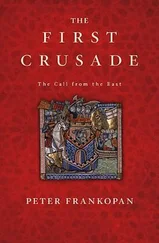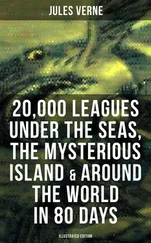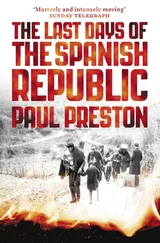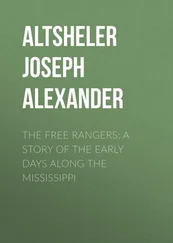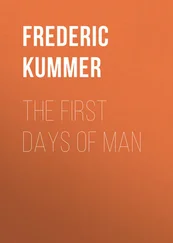Memories don’t work like a camera. The pictures our memory produces are hazy. They fuse with smells, sounds and faces, and in turn these are associated with conversations that might well have taken place in a completely different context. Brief moments from scattered nights over a number of years coalesce into a single memory. A riot of rapid sequences, like strobe-shattered shards that belong together but are impossible to compile into a story, however hard you may try. But I can tell when and how at least one of my first nights at Ständige Vertretung ended.
One morning, before sunrise, we staggered up the steep stairs out of the damp cellar and into the wintry orange light of Berlin. It was a Friday, 18 January 1991. The reason I’m so sure of the date is because that morning something about the big wall on the far side of the large stretch of wasteland behind Tacheles was different.
Right at the top of the wall below the roof, written in white lettering at least two metres high, was the word KRIEG . War. The previous evening when we went down into the Tacheles cellar – Thursday used to be house night – that graffiti hadn’t been there. In the early hours of the previous day, Operation Desert Storm had begun in Iraq. That same day Helmut Kohl was elected the first chancellor of a reunified Germany.
It snowed heavily for a few days in the winter of 1990–1, making Alexanderplatz virtually impassable. The snow appeared to have got the better of East Berlin city council. The old order had collapsed, and the new one wasn’t yet fully in place. A year had passed between the Wall falling and reunification. East Berlin was caught up in a turbulent transitional phase marked by constant demonstrations, art happenings and parties. A situation similar to what nineteenth-century utopians christened ‘anarchy’ had taken hold during the interregnum between systems; an order that appeared to function virtually without leaders. Berlin was no longer the capital of the German Empire, even though every other street corner in Mitte suggested it might have been until very recently. Berlin was no longer the capital of the GDR, and not yet the new capital of a reunified Germany. A deal for Berlin to become the capital was far from done. Quite a few people in West Germany would have much preferred the seat of government to be Bonn rather than decrepit, dirty, poor Berlin in the eastern zone, which to their minds was halfway to Siberia.
Anyone arriving for the first time in reunified Berlin from the old West Germany encountered young East Germans in the process of learning about life in a world that had changed out of all recognition. There were East Berliners coming home from Schöneberg and Kreuzberg after a brief exile. There were people who went off travelling for a long time or moved to West Germany. And then there were those who joined forces with West Berliners and new arrivals from elsewhere after the fall of the Wall to create fashion, music and art, become DJs, design flyers and set up publishing houses and galleries, organize raves, open bars and clubs, sometimes for a matter of weeks and generally with no licence to serve alcohol. The clubs were the nerve centres of the new culture of ‘Metropolis Mitte’, as a flyer for the Eimer, a squat in Rosenthaler Strasse, called it.
Nick Kapica and Tim Richter were keen to identify what made a good club night.
‘What makes people tick? How do you get people to dance, really dance, all night long? Unlike the clubs we’d been to before, people came to us to enjoy the night. They respected the DJs as performers’, Nick says. This Londoner with reddish-blond hair has Polish roots. He packed his bags when the Wall fell. The sight of all those people dancing on the Wall and the general euphoria on TV convinced him to take a look around Berlin for a year. Like so many of those who moved to Berlin-Mitte in 1990, Nick ended up in Tacheles. That was where he met the Australian Tim Richter while Café Zapata was being set up on the ground floor. One night, the two of them were hanging out, sipping their beers and wondering where they could go for a dance. They’d been to a few clubs in West Berlin, to Kreuzberg, Charlottenburg and Schöneberg, but there was something missing. A club with an idea behind it, a club that appealed to a specific audience. To their minds a club night was an event that needed curating.
Nick wanted to put into practice in Berlin what he had learned at Ravensbourne College of Design and Communication. There, they’d taught him about the Ulm School of Design’s concept, based on the principles of the Bauhaus movement and the rigorous lines of Swiss modernism.
‘We knew exactly what kind of public we wanted. We knew how it should feel. We knew what kind of music we’d play and we could already visualize the atmosphere inside our club’, he says. ‘The only thing we hadn’t figured out was where to do all of this.’
Some time later, the two men knew they’d discovered the perfect place for their club when they spotted a trapdoor in the floor of Café Zapata. They shovelled out huge quantities of soot and dirt from the hole beneath it and eventually came across a flight of stairs and a walled-up door.
‘It was a total mess. We structured the interior to reflect what it was like when we found it – two rooms separated by a smaller middle room. We knocked down some walls and built a bar to create a dynamic space. We didn’t do any advertising in the normal sense, but every freak in Berlin came to our opening night. They became our regulars, and the line outside the door was enough to tell any future guest whether they were “in” or not’, Nick Kapica says.
Initially, Ständige Vertretung only opened on Thursdays and Sundays. Those who chose to go out partying on Thursday and Sunday night, knowing full well they would have to go to work the next morning, paid for the pleasure with headaches, tiredness and below-par performance. Partying is about letting yourself go, feeling free and being unrestrained with your time. It’s a good bet that most of those sipping beers and cocktails, smoking joints or snorting speed at Ständige Vertretung on a Thursday night had no regular occupation.
Nick and Tim’s club was intended to be exclusive and unusual and yet open to everyone, so they chose not to apply a door policy defining who was allowed in and who wasn’t. They pretended there was one, though, to create a bit of suspense.
‘We were both graphic designers and that’s how we approached the project’, Nick says. He dreamed up slogans and themes that became the monikers of individual club nights – for example, Delirium, Swamp, Post House, Corruption and many more. You got your wrist stamped at the turnstile that marked the transition from outside rules to house rules. The day after, sometimes for a little longer, that stamp would be your only reminder of ever having been there, of having taken part in the night-time ritual. Because Ständige Vertretung operated a strict photography ban.
‘Banning photos but filming people having their hair cut at night and screening it live in the club was a way of teasing out questions of secrecy and privacy. The toilets were unisex at first. No cubicles. After a while, the only feature that remained was the one-way mirror you could look out through onto the dance floor. It was all about accentuating the moment and the situation we all found ourselves in together.’
The photography ban was emphatically enforced. Breach it and your camera could end up in pieces on the floor, or at least the film torn out and exposed.
‘Loads of crazy things happened in that club. The only ones who can talk about them were people who were there, and every one of them will have their own version. There are hardly any photos to back up their stories. Those people possess something special in a day and age when every event is immediately posted online. We didn’t really care about being photographed, but we did want to create a special atmosphere, a sense of mystery’, Nick Kapica says. ‘There had to be something only people who were there could remember.’
Читать дальше

